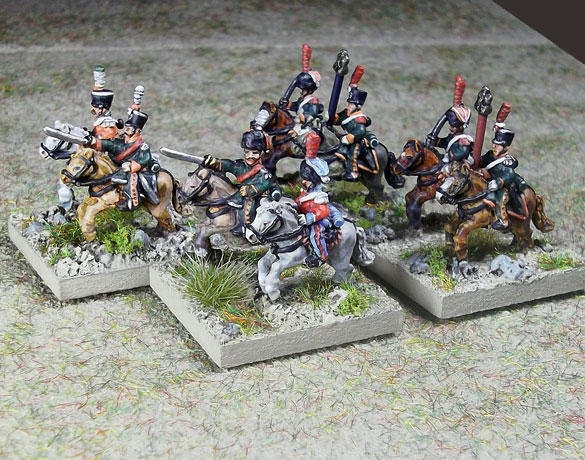
Organising French Light Cavalry
As I wanted to base light cavalry two figures to a base – sharing the same frontage as three heavy cavalry figures (see Post 129) – I moved figure totals around, if I had to, to make sure all French and Austrian light cavalry regiments in my Aspern-Essling orders-of-battle at 1:50 had even-number totals. French light cavalry regiments were organised in four to six squadrons – although at Aspern-Essling they fought with only two or three squadrons. Each light cavalry squadron was made up of two companies, each company of two troops. At 1:50, squadrons worked out as four figures (two bases) – one figure equalling one troop and one base (of two figures) equalling one company. A French élite company, therefore, could be mounted on a base of its own. Although, it had to be admitted, not all élite companies were necessarily present at Aspern-Essling. I decided that the usual three command figures – officer, standard and musician – would be based as officer and trumpeter together, and the standard bearer accompanied by an élite trooper. It seemed reasonable that if anyone was to guard the regimental standard it might as well be the élite company – it also got me out of having to model a colpack busby on another élite trooper! It made sense that the officer and trumpeter shared a base. Philip Haythornthwaite in Napoleonic Light Cavalry Tactics points out that in action trumpeters were to attach themselves to the relevant officers to pass their orders. This was despite the fact that their position in a unit was often omitted in diagrams in many period manuals. But this was, perhaps, because the manuals described manoeuvres for the exercise field rather than the battlefield.





































































































POST 165
165












